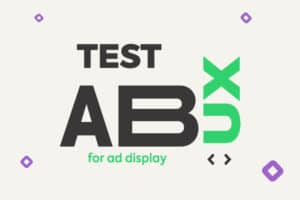At Grumft, an AdTech with over a decade of experience in monetization and optimized tag development, we deeply understand that user experience (UX) is key to a website’s success. Therefore, Cumulative Layout Shift (CLS) is one of the metrics we monitor closely for our clients. This comprehensive guide will explore how CLS impacts UX and SEO, and how Grumft’s tags do not negatively affect the optimization for your site’s Core Web Vitals.
Index
- 1 CLS from the Perspective of Monetization and Tags Experts
- 2 Why Should Experienced Publishers and Developers Care About CLS?
- 3 Metrics That Matter: Evaluating Your Site’s CLS with Expertise
- 4 Optimization in Action: Strategies Tested and Approved by Monetization and Tags Experts
- 5 Case Study: CLS Optimization
- 6 Continuation: Expertise in Monetization and Ad Optimization
- 7 Final Thoughts
CLS from the Perspective of Monetization and Tags Experts
Cumulative Layout Shift can be seen as an invisible obstacle that hinders monetization by creating an inconsistent user experience. For example, a user might be diverted from clicking an ad due to an unexpected layout shift, resulting in high CLS, which is undesirable for any effective monetization strategy.
Why Should Experienced Publishers and Developers Care About CLS?
The impact of CLS goes beyond mere annoyance:
- Compromised User Experience: Navigation becomes more challenging, and accidental clicks may increase, directly affecting visitor retention and brand perception.
- SEO at Risk: Google prioritizes user experience in site ranking. A highCumulative Layout Shift can result in poorer placement in search results, reducing organic traffic and impacting revenue.
- Reduced Accessibility: Abrupt layout changes can make navigation difficult, especially for people with disabilities, potentially leading to litigation for non-compliance with accessibility guidelines.
Metrics That Matter: Evaluating Your Site’s CLS with Expertise
We use tools like PageSpeed Insights and Search Console to identify and mitigate Cumulative Layout Shift issues. These tools enable quick and effective actions to enhance the visual stability of your sites across various contexts.
Optimization in Action: Strategies Tested and Approved by Monetization and Tags Experts
Our strategic approach against Cumulative Layout Shift is the fruit of years of optimization experience. Here are some techniques that have proven effective:
Content and Layout:
- Images with Defined Dimensions: We ensure that all images load with predefined dimensions to avoid visual jumps, maintaining layout stability.
- Fixed Ads: We position ads in stable areas of the page to ensure they do not interfere with reading or user interaction.
- Pre-loaded Fonts: We implement font pre-loading, reducing the visual impact of text “jumping” when a page is loaded.
- Avoid Blocking Content Elements: We organize elements like menus and sidebars so they do not obstruct the main content.
Development and Technology
- Lazy Loading: Images and other multimedia content are only loaded when they are about to enter the user’s view, significantly improving CLS.
- CSS Over JavaScript for Layouts: We prioritize CSS for styling and layout instead of JavaScript scripts that can cause unexpected changes.
- Testing Across Various Devices and Resolutions: We ensure the site presents consistently across all devices and resolutions, avoiding disparities that can affect CLS.
- Continuous Monitoring: We use advanced tools to continuously monitor CLS and quickly adapt strategies as needed.
Case Study: CLS Optimization
Context: A renowned news site was facing significant challenges with high Cumulative Layout Shift , impacting both user experience and SEO. The abrupt layout changes were causing a high bounce rate and reducing time on the page.
Intervention:
- Image and Media Resizing: All images and videos were configured to load with specific dimensions.
- Ad Stabilization: Ads were repositioned in stable parts of the page and marked to load only after the main content.
- Loading Optimization: Implementation of lazy loading techniques for all non-essential elements.
Results:
- CLS Improvement: Cumulative Layout Shift was reduced from 0.25 to 0.05, significantly below Google’s recommended threshold of 0.1.
- Increased Engagement: Average time on the page increased by 30%, and the bounce rate significantly decreased.
- Better Google Ranking: UX improvements led to a better ranking in searches, increasing organic traffic.
Before and After Comparison:
- Page Views: Visual tools like screenshots and graphs were used to demonstrate improvements before and after the optimizations, highlighting a much more stable and pleasant interface.
Continuation: Expertise in Monetization and Ad Optimization
We adopt innovative strategies for monetization that are aligned with CLS optimization, ensuring that ads contribute positively both to revenue and user experience. Our detailed data analysis ensures that each adjustment to the site not only improves Cumulative Layout Shift but also maximizes the effectiveness of ads without compromising usability.
Final Thoughts
This case illustrates how a meticulous approach toCumulative Layout Shift optimization can transform the user experience and strengthen SEO. At Grumft, we ensure that our tags and monetization techniques are implemented in a way that supports and improves the Core Web Vitals, enhancing performance without compromising the quality or effectiveness of the publisher’s site. Contact us today and see the transformation in your revenue.





